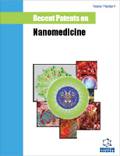Abstract
Nanomedicine is the relevance of nanotechnology in the area of healthcare, diagnosis of disease, cure and prevention of disease. Nanotechnology covers the diverse area of matters at dimensions between approximately 1 to 100 nanometers. Nanotechnology has enormous applications in drug delivery field. Nano drug delivery systems can reduce the drug consumption and side-effects by lowering the deposition of the active agent in the non targeted sites. Ayurveda is thousands of years old holistic system of Indian medicine. Various herbs, metals and non-metals preparations are used as medicine in Ayurveda. In the Ayurvedic description, several metallic preparations called Bhasma are in clinical use since 8th century AD. The Puta system of Ayurveda describes that metals or minerals should be heated at high temperature for melting and then it quench in suitable media like herbal juices or decoction for specified times. The Bhasma (incinerated metals) is obtained by repeating these methods several times. In this process the toxic effects of the metals are not only nullified but are transformed into biologically active nanoparticles. When various Bhasmas viz. Swarna bhasma, Makshika bhasma, Abhrak bhasma, Tamra bhasma and Louha bhasma were subjected to analysis under electron microscope it was found that they were similar to nanocrystalline materials possessing similar physico-chemical properties. The therapeutic effect of Bhasma may be attributed to large surface area of materials and small particle size by which they can easily transported into cell nucleus and to specific target sites as desired.
Keywords: Ayurveda, Bhasma, nanomedicine, nanosize, patent, safety.
Graphical Abstract
 37
37

